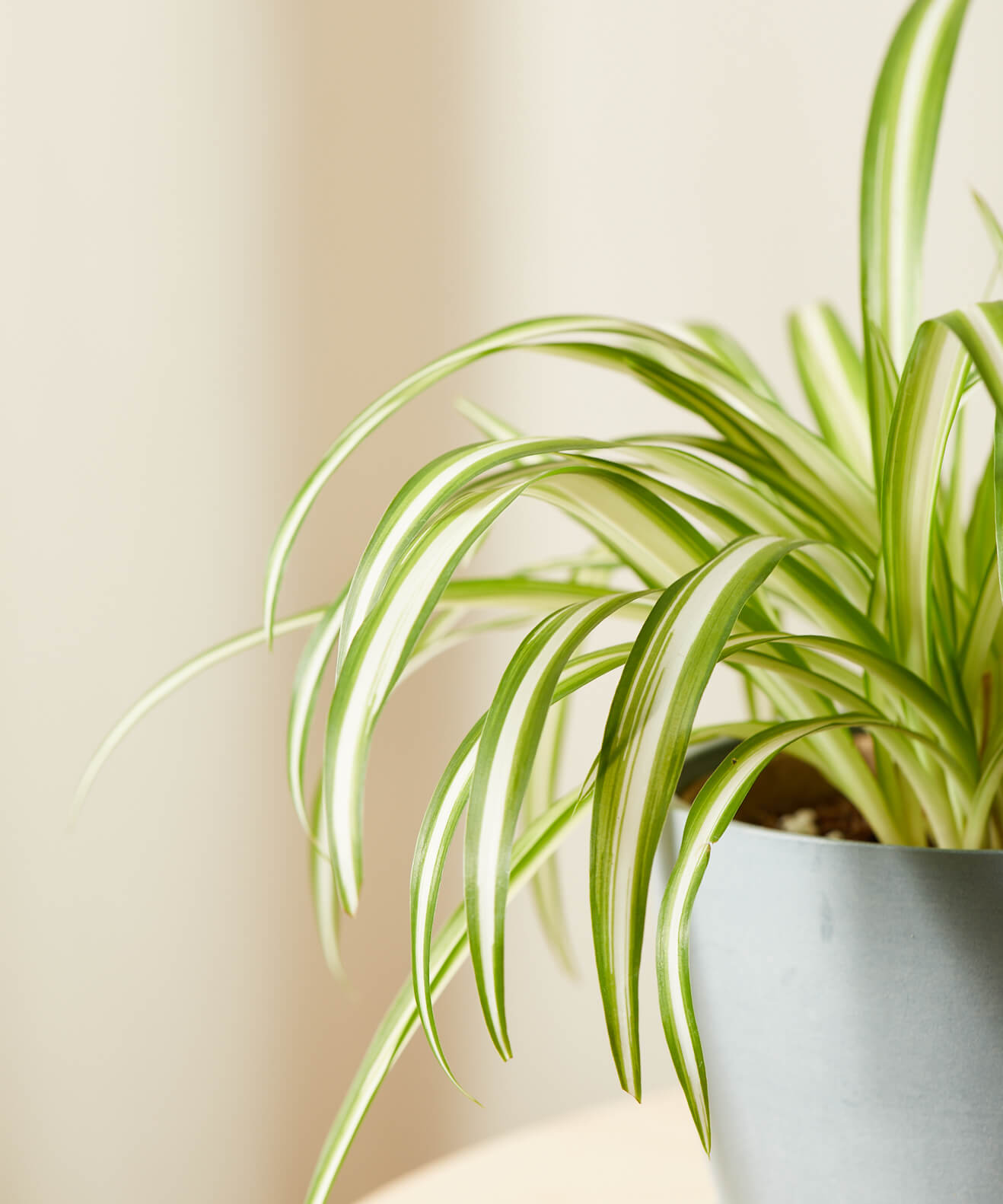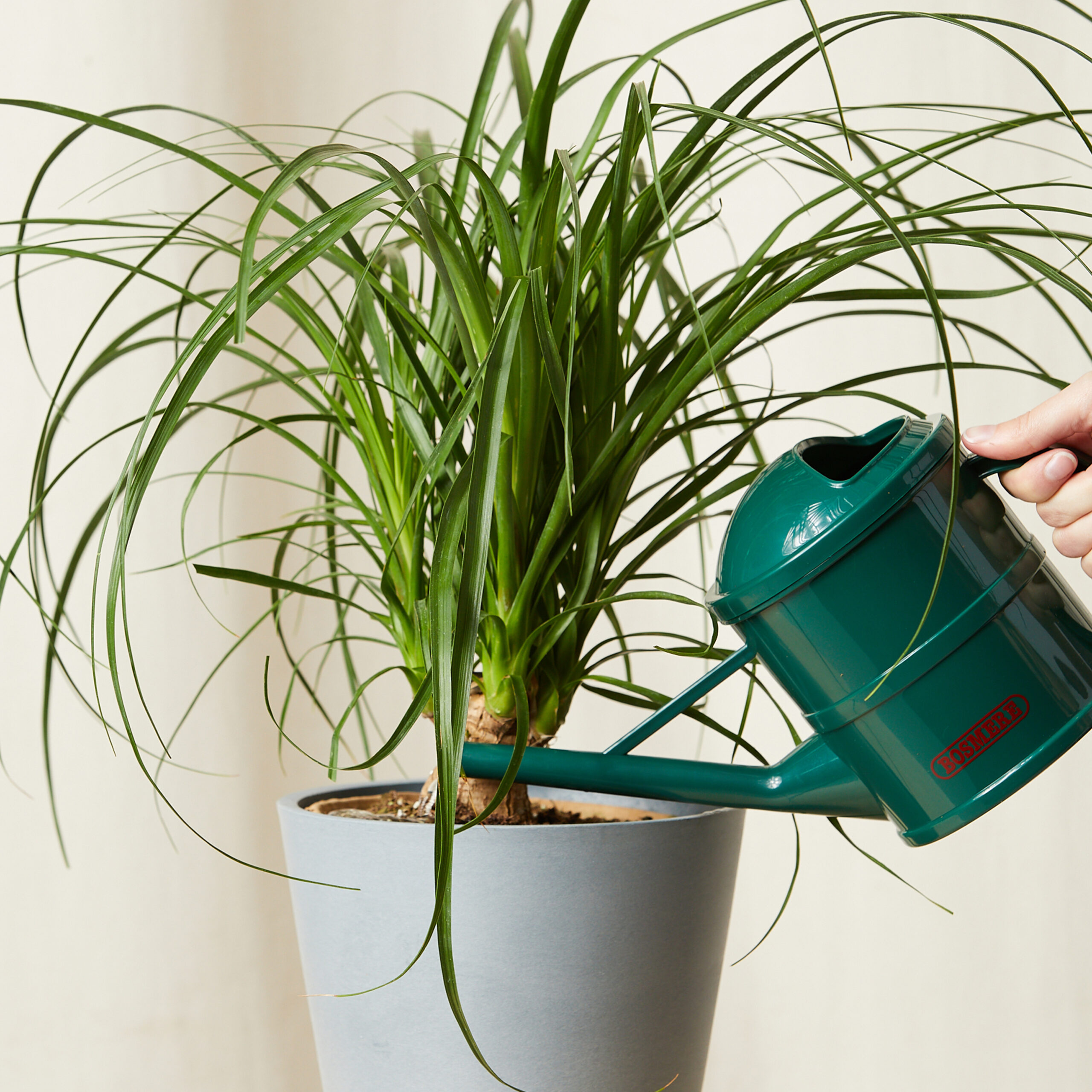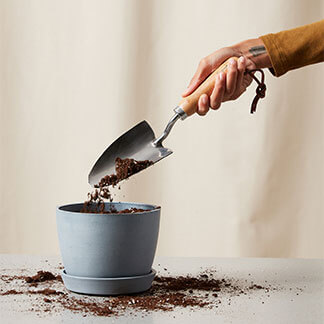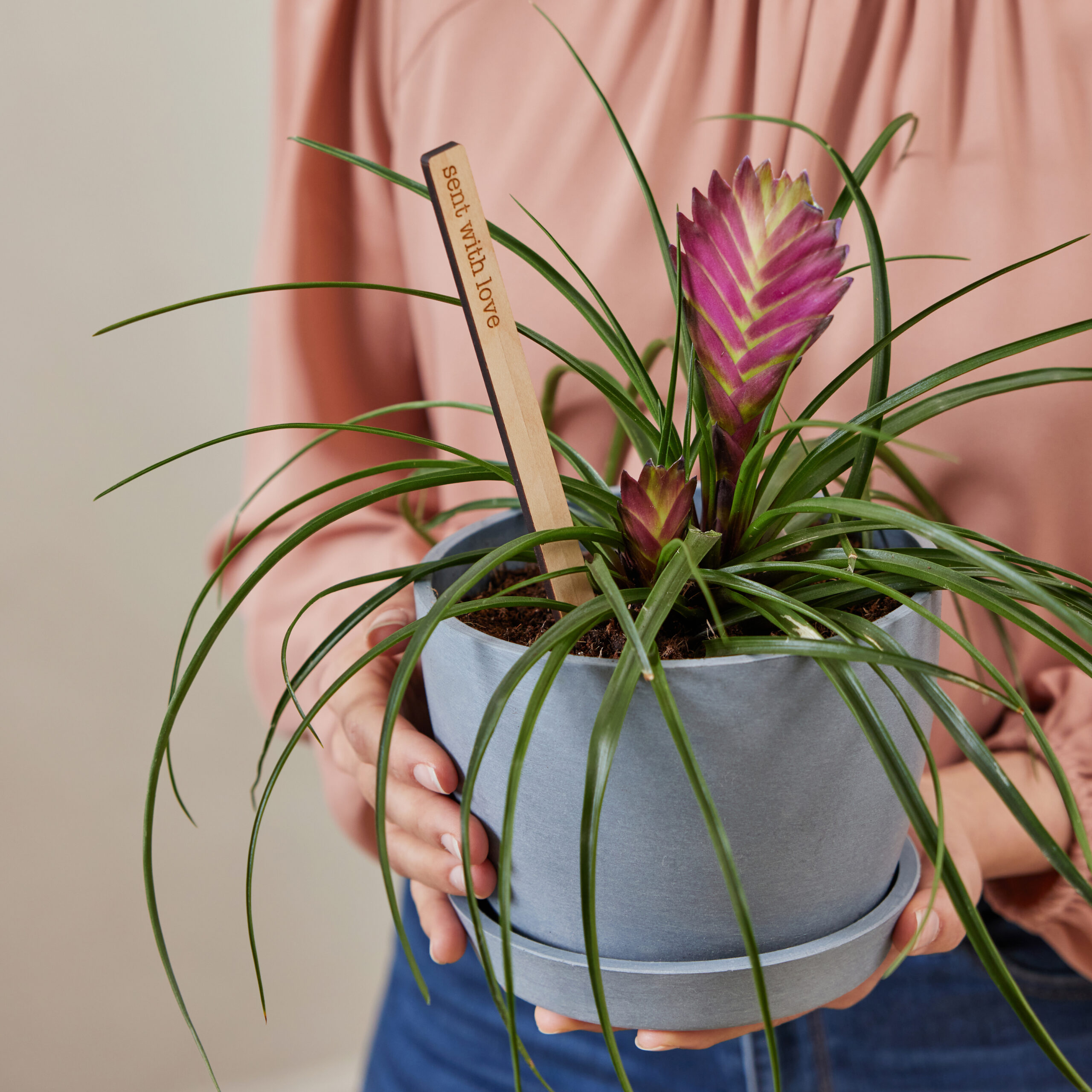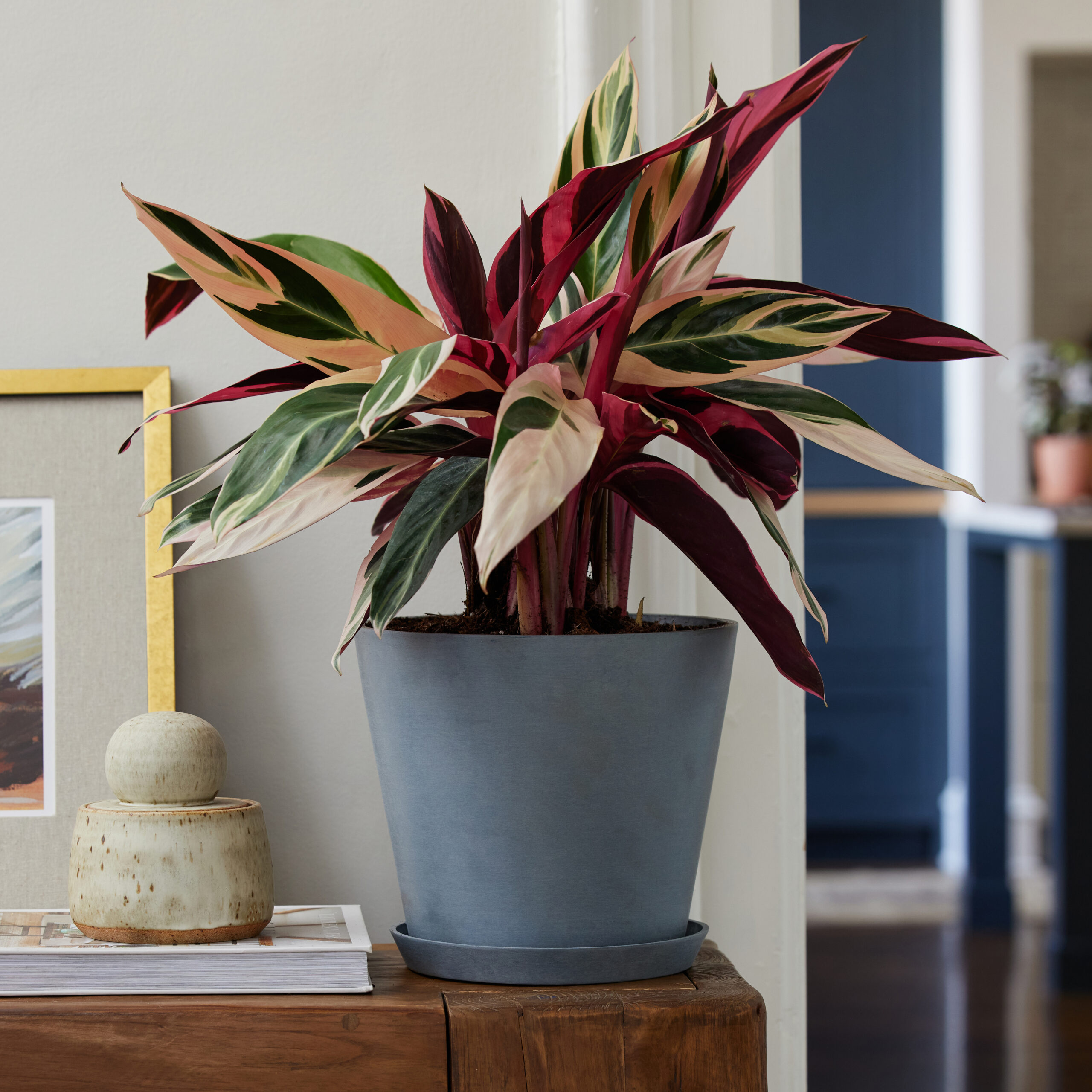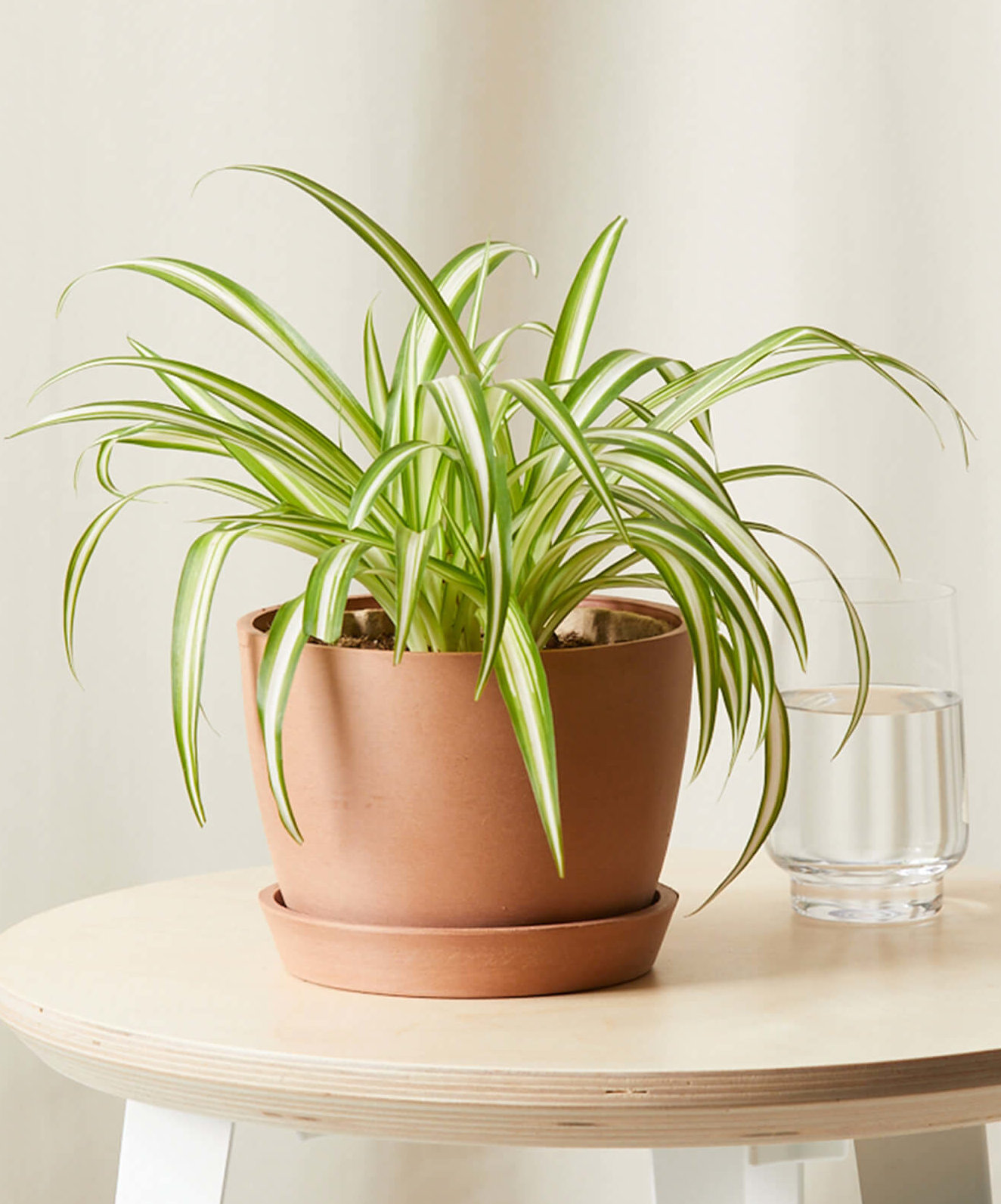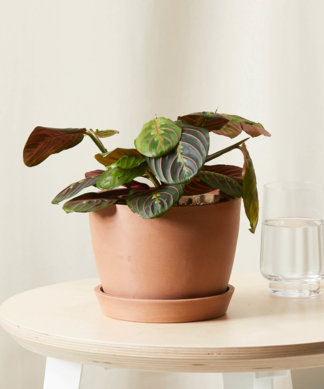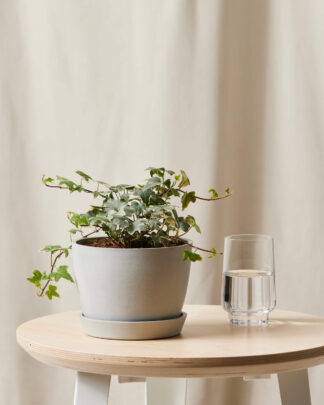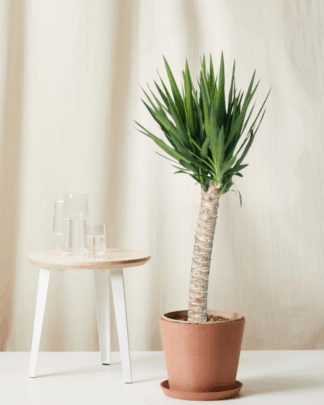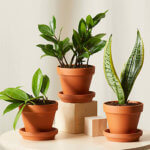Spider Plant
The Spider Plant is one of the most well-known houseplants for a good reason. They’re adaptable to almost any spot in your home and are hands-off with their care. This plant will be content in a low light spot or indirect bright light, with its soil drying halfway between waterings. With time, your spider plant will reward you with “spiderettes”, which you can propagate. The spider plant is the perfect kid-friendly and pet-friendly plant any plant enthusiast can enjoy.
Discover more: Bromeliad Guzmania Yellow or browse our Air Purifying Plants for additional options.
Details & Care
Does not ship to
ID
Size
SM—9"-15" tall (including recycled plastic Ecopot) Size Guide
Difficulty
No-fuss—Easy Care
Light
Low to Bright Indirect
Pet Friendly
Yes—Non-toxic and pet-friendly
Air Cleaner
Yes—Releases oxygen and absorbs pollutants
What's Included
- Healthy plant pre-potted with premium soil
- Plant size: 9″-15″ tall (including pot)
- Ecopots pot and saucer
- Pot size: 6.3″ in diameter, 5″ tall
- Saucer size: 6″ in diameter
- All the tips and tricks for expert-level care
Free Shipping
Get free standard shipping when you spend $125 or more. Learn More
Guarantee
If your plant dies within 30 days, we’ll replace it for free. Learn More
Description
The Spider Plant, a highly adaptable and easy-to-grow houseplant, adds elegance to any space. With its graceful, arching leaves, it shines as a tabletop centerpiece, mantle accent, or hanging plant. Known for its air-purifying qualities and pet-safe nature, the Spider Plant (Chlorophytum comosum) is a healthy and stylish addition to homes and offices.
Originating from tropical and southern Africa, this hardy plant thrives in a variety of conditions, making it ideal for first-time plant owners. As it matures, it produces “spiderettes”— small plantlets perfect for propagation, allowing you to grow new plants with ease.
Benefits of the Spider Plant
Highly Adaptable
The Spider Plant thrives in diverse environments, from bright indirect light to shadier corners, making it suitable for homes, apartments, or offices with varying light conditions.
Air-Purifying Qualities
Recognized for its ability to filter indoor pollutants, the Spider Plant enhances air quality, contributing to a healthier and more comfortable living or working space.
Pet-Friendly and Easy to Grow
Safe for cats and dogs, this low-maintenance plant is perfect for pet owners and beginners. Its fast-growing nature and resilience make it a forgiving choice for those new to plant care.
Expert Care Guidelines
- Watering: Water every 1-2 weeks, allowing the top inch of soil to dry out between waterings. Overwatering can lead to root rot, so ensure proper drainage.
- Lighting: Prefers bright, indirect light but adapts to low light. Avoid prolonged direct sunlight to prevent leaf scorching.
- Humidity: Tolerates standard indoor humidity but appreciates occasional misting to keep leaves vibrant.
- Propagation: Snip and plant spiderettes in soil or water to grow new plants, adding to the plant’s fun and interactive appeal.
Ideal Settings for the Spider Plant
- Homes and Apartments: Its versatility and arching leaves make it a stunning addition to tabletops, shelves, or as a hanging plant in compact spaces.
- Beginner Plant Owners: Its hardy, low-maintenance nature makes it an excellent choice for those starting their plant care journey.
Botanical Name
Common Name(s)
Spider Plant, Airplane Plant, Spider Ivy, Ribbon Plant